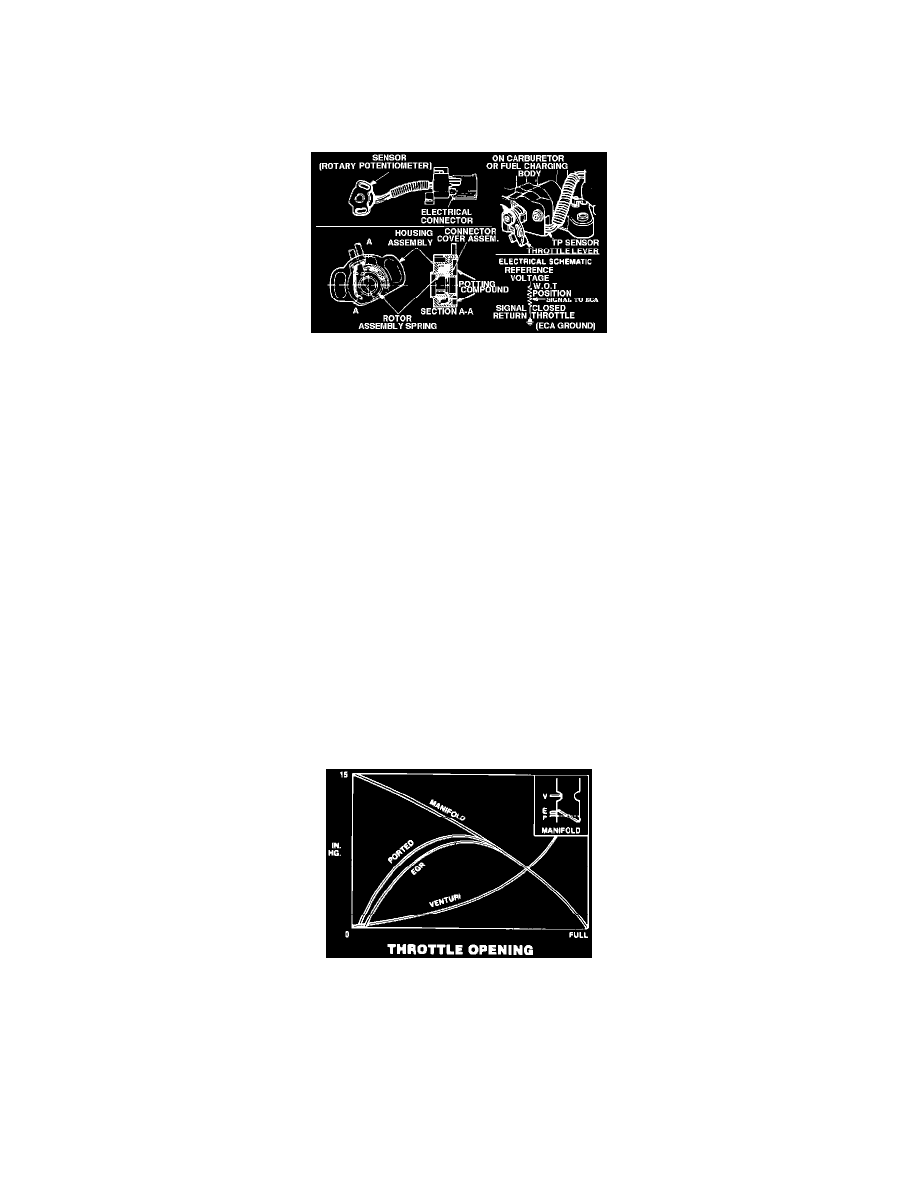F 350 4WD Pickup V8-7.3L DSL (1988)

THROTTLE KICKER ACTUATOR (TK) - A device that moves throttle linkage to adjust idle rpm. This can be accomplished by various
electromechanical systems. On some EEC-IV applications, an electric solenoid, controlled by the processor, supplies manifold vacuum to the throttle
kicker to adjust the idle.
THROTTLE KICKER SOLENOID (TKS) - Electrical solenoid or its control line. Solenoid when energized supplies manifold vacuum to throttle kicker
actuator as directed to the ECA. Actuator moves throttle linkage to increase idle rpm. TKS vents the actuator vacuum line when de-energized.
Throttle Position Sensor
THROTTLE POSTION SENSOR (TP). Potentimetric sensor or its signal line. Sensor wiper position is proportional to throttle position.
Defines engine operation mode:
closed, part or wide open throttle, also throttle angle rate for accelerator pump function (replaces carburetor
spark/ERG port). There are two types of throttle positioners:
rotary and linear (Tempo and Topaz only).
TRANSMISSION REGULATED SPARK CONTROL SYSTEM (TRS or TRS + 1) - A distributor vacuum control system aiding in more complete fuel
combustion by regulating spark retard when the outside air temperature is above 60~F. The system uses a switch responding to the gear range, or
hydraulic pressure in the transmission, to regulate a vacuum control valve.
TSP VACUUM OPERATED THROTTLE MODULATOR - TSP-VOTM
TURBO BOOST ACTUATOR (BOOST) - An output of the ECA which insures that no boost will be applied until certain engine conditions have been
met.
U
UNDERSPEED MODE - If the engine stumbles during a run mode, this mode is entered, incorporating unique strategy to help it recover and keep from
stalling.
UNIVERSAL DISTRIBUTOR - Distributor which uses a PIP sensor instead of a CP sensor, and TFI module instead of the Duraspark ignition module.
This distributor can be used with EEC only.
V
Vacuum Sources
VACUUM - The lack of air or air pressure. There are three types of vacuums important to engine and component function: manifold, ported and venturi.
The strength of these vacuums is dependent on throttle opening, engine speed and load.
VACUUM CHECK VALVE (VCV) - Used to retain vacuum signal in a line after vacuum source is gone.
VACUUM CONTROL CHECK VALVE - VCKV
VACUUM CONTROL TEMPERATURE SENSING VALVE (VCTS) - A valve that connects manifold vacuum to the distributor advance mechanism
under hot idle conditions.
